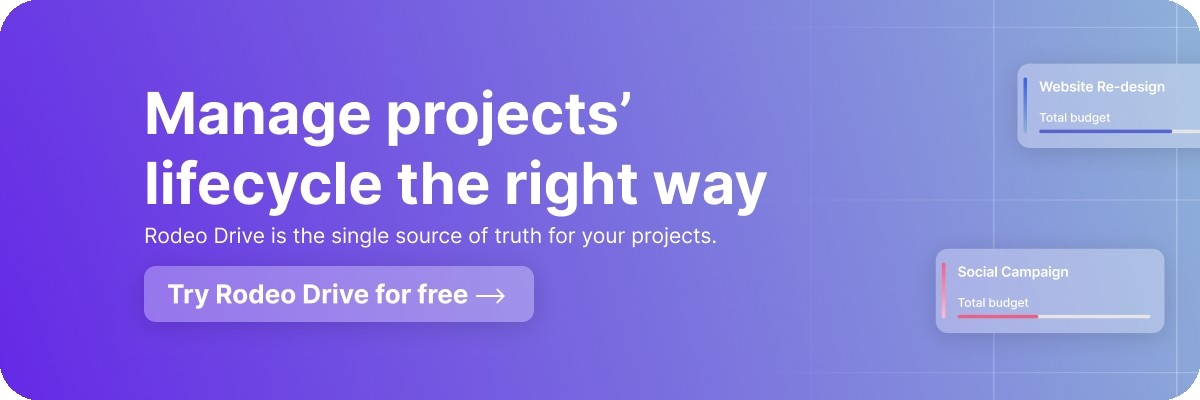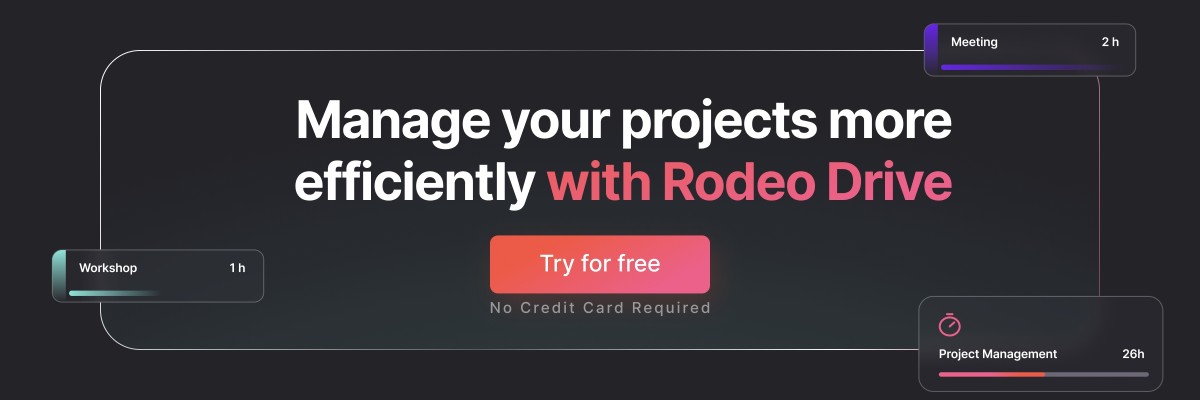Deadline Management: Proven Strategies to Keep Projects on Track
Project management comes with a plethora of deadlines. And try as you might, it can be extremely difficult to get your team to meet every deadline. Luckily, deadline management can help.
Deadline management is a process through which a project manager prioritizes, organizes, and plans various project activities to better adhere to the outlined project timelines.
In this blog, we’ll do a deep dive into why missed deadlines occur, how to prioritize your project tasks, as well as 12 tips to never miss a deadline again.
Deadline management failure: Why do teams miss deadlines?
There’s a common misconception that deadline management only consists of time management. In reality, you’ll need to properly manage tasks and team workloads to be successful.
Here are a few reasons why team members struggle with meeting deadlines:
- Disorganization
- Lack of team accountability
- Poor communication
- Unclear expectations
- Deadlines are overly ambitious
- Unforeseen circumstances
How to prioritize when managing multiple projects and deadlines
Regardless of the project, what you should prioritize comes down to two things: urgency and importance.
Prioritizing multiple projects with different deadlines
Many project managers turn to the Eisenhower Matrix to help them prioritize.
The principle behind this matrix was devised by former U.S. President Eisenhower, who struggled to decide on which tasks to focus on every day. When looking at your to-do list, you should be able to place each activity into a quadrant:
- Do: These are your most important and urgent tasks that should be completed ASAP.
- Decide: These tasks are important but not too urgent, meaning you should schedule a time to complete them soon.
- Delegate: These tasks are very urgent but of lesser importance to you. Delegate them to another team member who either has more time or is better suited for the job.
- Delete: These are tasks you should eliminate from your to-do list as they are not urgent or important. Completing them is not necessary and will take valuable time away from your more pressing tasks.
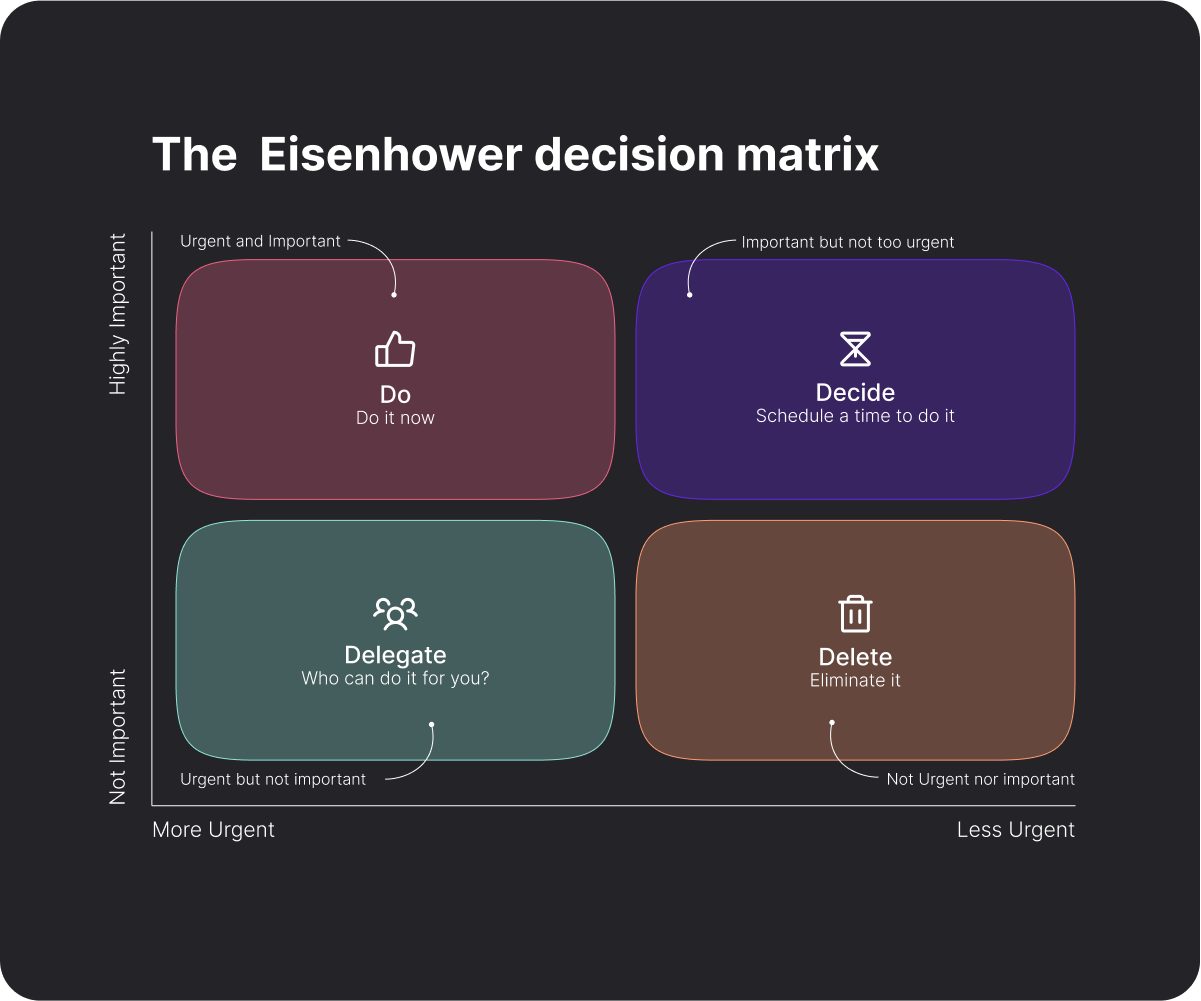
Also read: The 26 Key Project Management Skills for Success
Other than using the Eisenhower Matrix to sort tasks, you should also examine the level of complexity and time required to complete each project you’re working on right at the very start.
With that in mind, you can have a better idea of when you need to reprioritize according to the needs of each project.
You might also want to consider day theming – in other words, dedicating an entire day toward your first project and the next day toward your second project.
Related: Project Administration: A Crucial Part of Project Management
Prioritizing multiple projects with the same deadlines
Preparation is key in managing multiple projects with potentially conflicting timelines successfully. Here are a few strategies to help you out:
- Assess your timeline backward: Beginning with the final project deadline, map out how long it will take to complete each task. If one project has a longer timeline, shift your focus to that project first.
- Create a timeline for each task: Be sure to include an estimation of how long a task will take before assigning it to a team member.
- Use a project management tool: Software solutions can help you manage team workloads by bringing together the action items for all of your projects in one place.
- Get approval on your schedule before beginning: Running your project schedule by your stakeholders and your team can help manage everyone’s expectations ahead of time. Your team can help identify scheduling conflicts that you might’ve missed.
12 practical deadline management tips to ensure you never miss a deadline
There’s no debate that deadline management can be tricky. We’ve curated a dozen tips to prevent the kinds of delays that cause deadline management failure:
1. Break down your tasks into minor activities
You might’ve heard of the 8/80 rule, which is a popular project management concept in which the lowest level of work – i.e. tasks – should be no shorter than 8 hours and no longer than 80 hours. The idea is that each task should be meaningful enough to take at least a day of work, but manageable enough to not take longer than two work weeks.
Even if your team follows this rule, you’ll likely still need to make your tasks more manageable by dividing them into smaller pieces. Doing so can paint a more realistic picture of how long each task will take and prevent you from becoming overwhelmed.
2. Make daily to-do lists
You might feel inclined to go through your email inbox and immediately respond to new Slack messages when you open your computer first thing in the morning, but these activities can eat up valuable time.
This is why it’s best to make daily to-do lists at the end of each workday to prepare you for the next day ahead of time. This will allow you to jump right into your work the next day, and it prevents you from forgetting any tasks you left off on.
3. Overestimate the time requirements of each task
A key principle in deadline management is assuming that interruptions and delays will occur and incorporating buffers into your schedule. Many of us fall victim to the planning fallacy, which is an optimistic prediction bias that causes us to underestimate the time it takes to complete a task.
Consider estimating that tasks will take two to four times longer than you anticipate – particularly if you’re assigning tasks to team members you’ve never worked with before. This extra time cushion will be useful should you face last-minute meetings, a distracting office environment, or other unforeseen circumstances.

4. Prioritize
When making your daily to-do lists, you should constantly keep in mind which tasks are most urgent, which will take the most time, and which you can put on the back burner if need be. The Eisenhower Matrix can certainly help.
Also read: Prioritising Tasks When Everything is Urgent: 10 Effective Strategies
5. Tackle your most challenging tasks first
Many of us experience the dreaded afternoon slump when we begin to lose steam and motivation during the workday. For this very reason, the tasks we put off until the end of the day often don’t get done.
You’ll likely have more success if you tackle your most challenging tasks first thing in the morning when your mind is fresh. Plus, checking something large off your to-do list early in the day can make you feel more productive.
6. Use project management software
Project management tools such as Rodeo Drive make task management and time tracking easy, which helps project managers identify when team members are falling behind or taking too long to complete certain tasks. These tools can also assist with tracking project profitability metrics.

Adding a project activity to Rodeo Drive's planner
7. Optimize your meetings schedule
Too many project meetings can clog up your calendar and waste hours that you would’ve otherwise spent productively.
Don’t be afraid to decline meetings where you’re not needed, and try to schedule your meetings back to back whenever possible. Spending your day dropping in and out of meetings prevents you from getting in the flow of your solo work time.
Additionally, get in the habit of preparing meeting agendas beforehand and either including them in the calendar invite or sending them to the other attendees ahead of time.
.png)
Also read: 20 Working From Home Best Practices in 2023
8. Adopt time management methods like time blocking
If you have trouble completing your to-do lists, give time blocking a try. Time blocking is a method in which you block out time in your calendar for each task on your to-do list to help you eliminate multitasking and focus on one activity at a time.
Many related methods might be worth trying as well, such as time boxing and the Pomodoro method. Finding the method that works best for you will likely require some trial and error, but you’ll certainly see how they can be beneficial in helping you meet deadlines.
9. Dedicate time toward reprioritization throughout the week
As you cruise through the week, new responsibilities will likely get added to your plate unexpectedly. And often, these new tasks warrant a shift in your focus.
It’s good practice to adjust for these unexpected changes by allotting time to reprioritize your tasks. You might want to pencil in time halfway through the week to investigate whether your priorities list needs any rearranging.
10. Track your time
When you begin planning a project timeline, there will likely be a lot of guesswork involved since you can never be certain how long a particular task will take you to complete.
Tracking your time will allow you to better estimate how long it typically takes you to complete certain tasks, which will help you create more accurate estimations for future projects.
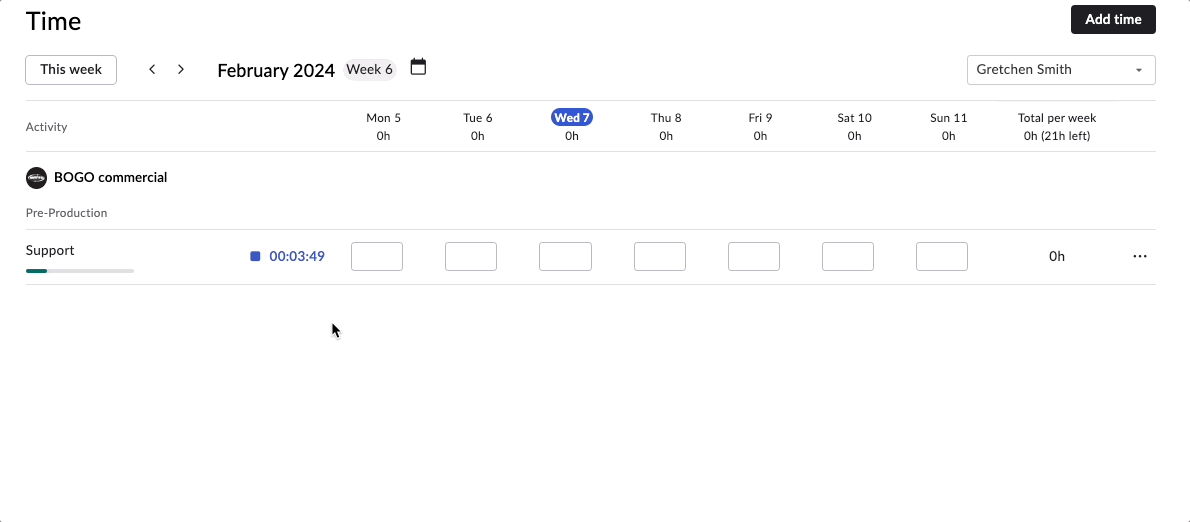
Easily record your time with Rodeo Drive's live timer
11. Rely on visualizations like Gantt charts and Kanban boards
To-do lists are good for a daily breakdown of what needs to get done, but it can be extremely useful to use visual tools like a Gantt chart or Kanban board to better prioritize and understand your timeline and the current status of each item.
12. Encourage team communication
As we already discussed, communication is one of the main reasons why people miss deadlines. Encouraging your team to communicate when roadblocks prevent a task from being completed or when questions arise is essential.
Implementing proper communication workflows can consume a lot of the project manager's time, which is why some find it useful to implement a communication plan template.
Best ways to manage your projects and deadlines
Project management software tools are an absolute must-have for deadline management.
All-in-one solutions like Rodeo Drive offer task planning, time tracking, workload management, and reporting in a single application, meaning you’ll have a single source of truth for all of your projects. This can help you identify delays, manage due dates, and assign tasks – among many other functionalities.
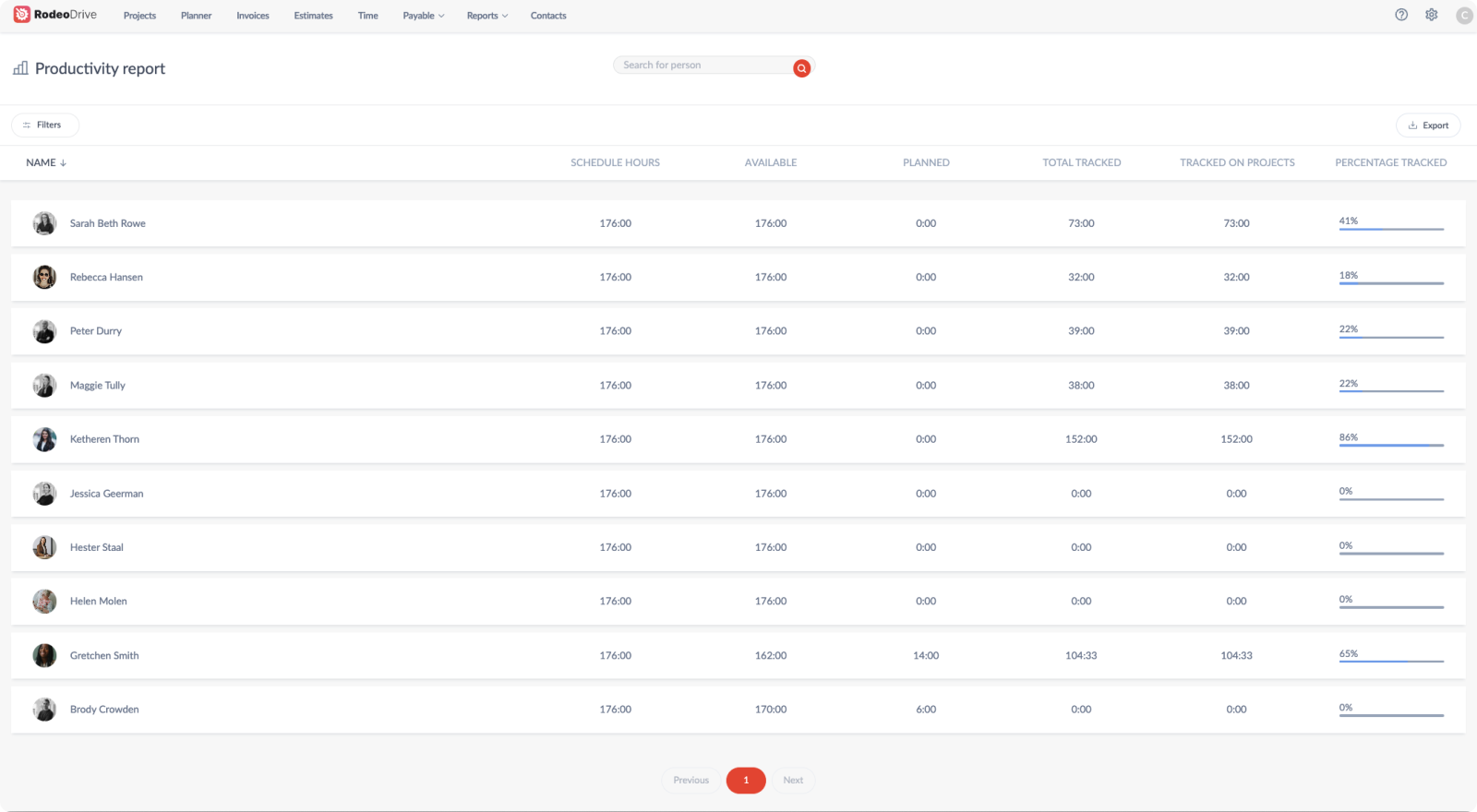
Rodeo Drive's Productivity report allows you to visualize each team member's billable rate
Why not give Rodeo Drive a try and see if it can improve your team’s deadline management abilities? Get started for free today.





